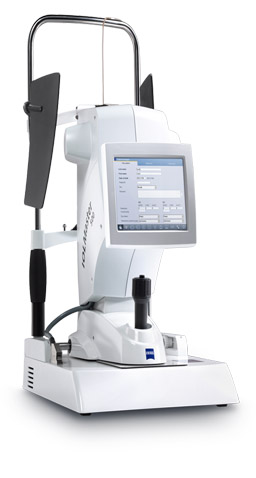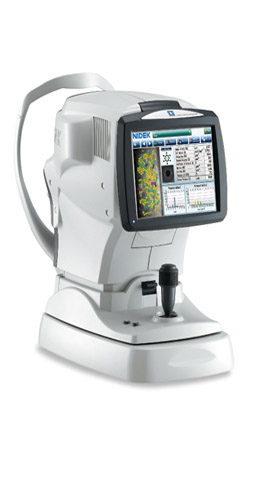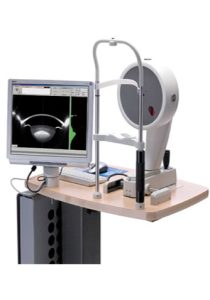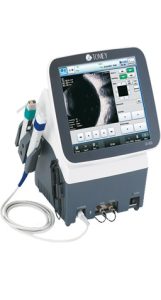Special examinations
Optical biometrics
Optical biometrics - IOL Master is a modern and accurate instrument for measuring the axial length of the eye and calculating the power of the intraocular lens during the preoperative study of cataracts and refractive surgeries.
Corneal topography
Corneal topography is a special examination where through a series of color maps (Axial Map, Tangential Map, Elevation Map, Refractive Map) the ophthalmologist obtains data on both quantitative and qualitative characteristics of the curvature of the cornea. The topography chromatically represents the distribution of refractive power on the surface of the cornea, from its center to its periphery.
Ophthalmic ultrasound A and B
Ultrasound A and B is a unique tool for the two-dimensional imaging of the optic nerve, the ocular muscles and the eyeball.
Visual fields
The space that can be seen by the naked eye is called the visual field. By examining the visual fields, the visual field of each eye is systematically mapped by checking the sensitivity of the retina to a large number of data points. The Ophthalmologist analyzes and evaluates the results of the examination. The visual field is the main test for diagnosing and monitoring glaucoma. It is a painless examination, requires no preparation and the usual time required is about 30 minutes.
Endothelialoscopy
Endotheloscopy is a special examination where with the help of an electron microscope the ophthalmologist has the ability to directly image the endothelium of the eye and measure the number of its cells. The corneal endothelial cells are hexagonal in shape and in childhood their number ranges from 3,500 to 4,000 per mm2. With age, the number of cells decreases resulting in adults having 1,500 to 2,000 cells / mm2.
Refractive testing in children
Complete pediatric ophthalmological examination.
Neurophthalmological examination of adults and children
TREATMENTS
.
Intravitreal injections
For the treatment of retina and macular degeneration using ANTI - VEGF factor cortisone etc.
LASER TRABECULOPLASTY - SLT
For the treatment of high intraocular pressure associated with glaucoma.
Capsulotomy
For the treatment of blurring of the posterior periphery, the so-called "secondary cataract", which occurs in 20% -40% after cataract surgery, as well as the treatment of closed-angle glaucoma by creating iridotomy.



